AVIOBOOK.com
"the on line aviation corner"
edited by mauro finati/flighline iaps and paolo rollino/aviation reports
THE ROYAL AUSTRALIAN FLEET
AIR ARMS AT FIFTY
(text and pictures by Paolo Rollino/Aviation Reports)
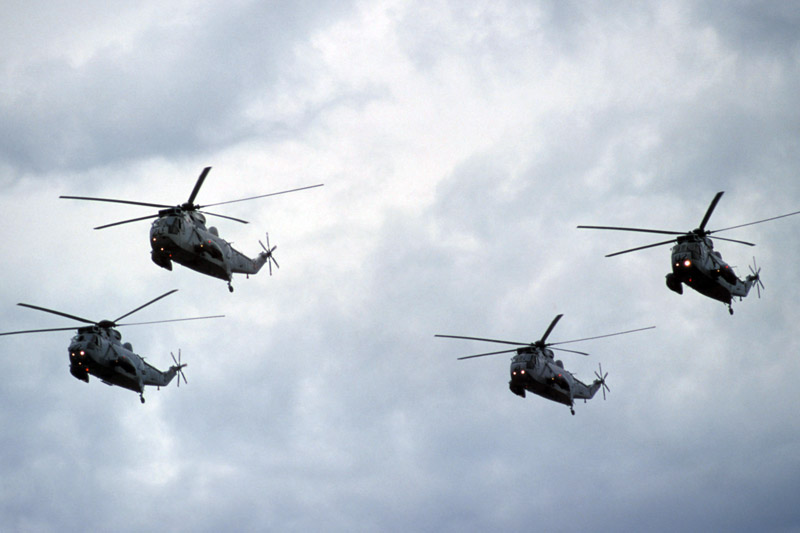
Australia has an area of around 2,966,000 sq.mi. (7,682,000 km2), some 75% of Europe, is surrounded by some 23,600 miles (38,000 km) of coastline and thousands of square miles of territorial seawater. It would be logical, therefore, to assume that, in the defence requirements of the Australian Defence Forces (ADF), the Royal Australian Navy (RAN) would be the numerically most important asset. In fact the RAN can deploy only around 15,000 personnel (compared to 29,000 in the Army and 20,000 in the Air Force). Even though the naval force is being bolstered, above all in terms of quality, it remains certainly underdimensioned in relation to the size of the territory that it is tasked with defending. It should be remembered, however, that this part of the globe has been the least affected by major conflicts, and that within the Australasian continent the various member states maintain excellent and stable relationships. Given that in modern operational scenarios it is essential for any surface fleet to possess valid aircraft and helicopter support, both for offensive and defensive tasks, the RAN also deploys its own Fleet Air Arm (FAA) or Naval Aviation Force Element Group (NAFEG). The latter employs some 2,000 men, 800 of which are civilians.
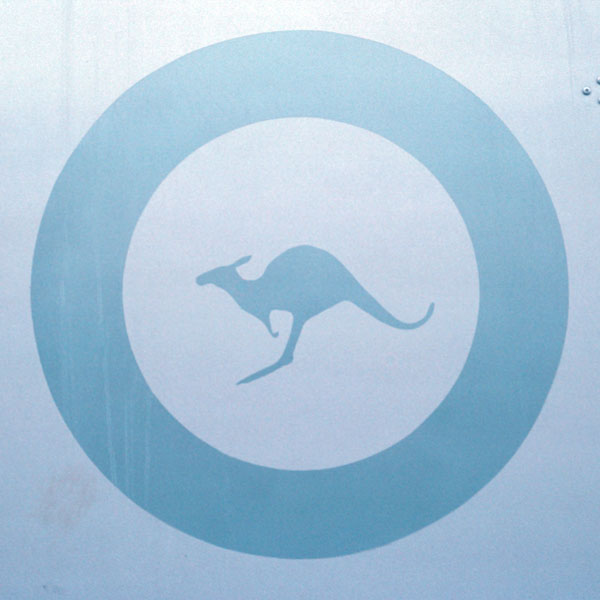
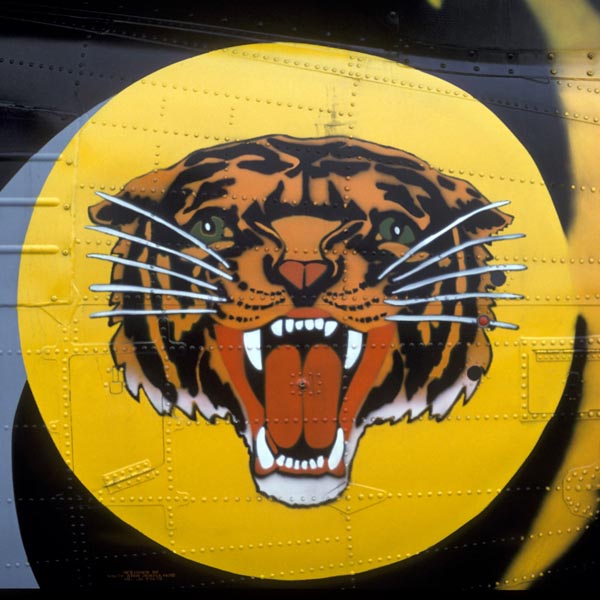
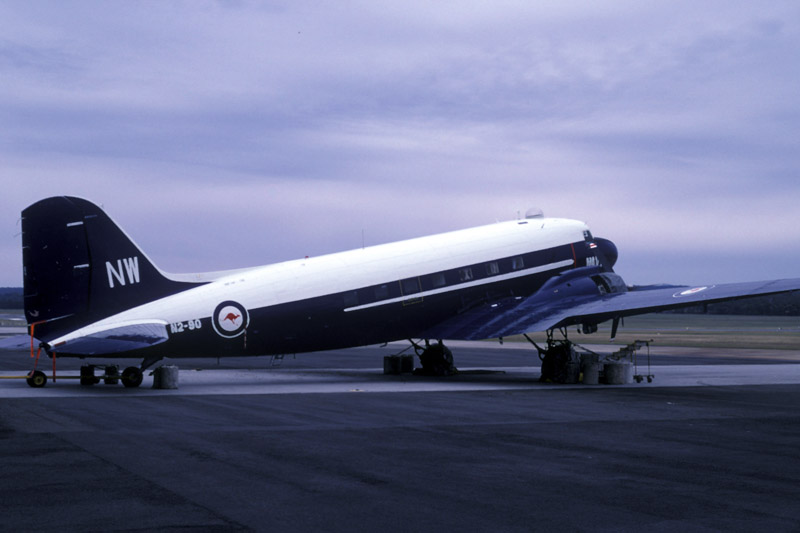
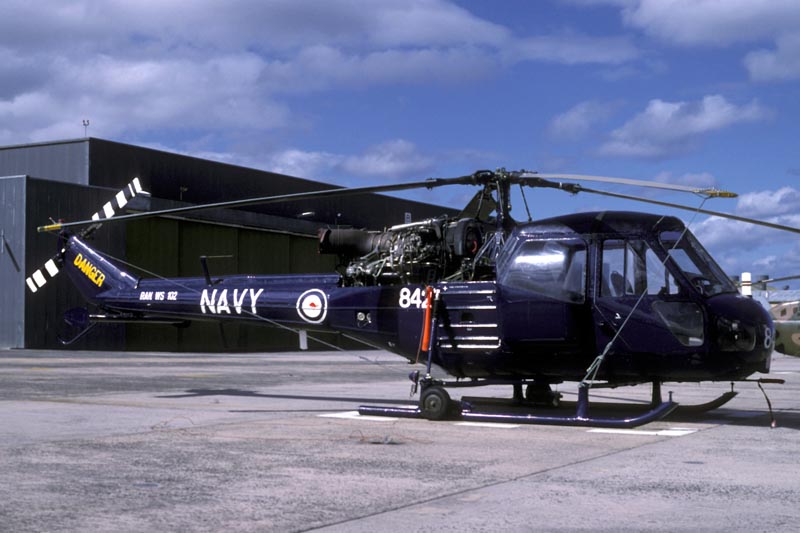
A LITTLE HISTORY
The origins of the Royal Australian Fleet Air Arm can be traced back to July 3,1947, when the Commonwealth Defence Council approved the formation of a naval aviation force which would be controlled and operated by the RAN. The initial planning provided for the purchase of two aircraft carriers, aircraft, and shore facilities. The carriers were later named HMAS Sydney (ex HMS Terrible) and HMAS Vengeance; the latter was operated on loan from the Royal Navy, and was replaced in 1955 by HMAS Melbourne (ex HMS Majestic). The shore facilities were at the former RAAF air base of Nowra, New South Wales, which was considered the ideal choice because of its proximity to Jervis Bay, a natural basin large-shadowed enough to accommodate the entire British Pacific Fleet during WWII. HMAS Albatross, as RANAS Nowra is also known, was commissioned on August 31, 1948 and the 20th Carrier Air Group, comprising Hawker Sea Fury and fairey Firefly aircraft, were brought from the UK to Australia by HMAS Sydney. These aircraft were respectively operated by 805 and 816 Squadron, and disembarked in RANAS Nowra in May 1949. In November of the following year the Sea Furies and Fireflies of the 21st CAG 808 and 817 Squadron also arrived. The shore base has been expanding ever since. As more capable aircraft have been acquired, so ground support facilities have had to be built to service the more sophisticated equipment. In April 1955, De Havilland Sea Venoms and Fairey Gannets arrived, so radar workshops and test facilities were required. More aircraft flying from the base needed stricter standards of air traffic control, and a new control tower was built in 1958. Westland Wessex helicopters with dunking sonar capability required a further expansion in servicing techniques and skills in 1962. Three years later it was decided to buy Douglas Skyhawks and Grumman Trackers, and additional avionics facilities were built to service the complex equipment carried by these types. The general revitalising of the aircraft and helicopters still continues, although the continuous defence budget reductions obliged the Australian Navy to retire its last carrier, HMAS Melbourne, at the beginning of the last decade (June 30, 1982), with the consequent reduction in the forces air component. In total the NAFEG has used around 25 different types of aircraft in its fifty-year life. Seemingly with the intention of underlining its direct descendance from the Royal Navy, the NAFEG units retain their 7xx and 8xx Squadron designations, although identified by US Navy style prefixes: HS in the case of the anti-submarine helicopter squadron and HC for the combat support helicopter (and aircraft) squadron. At the present moment the naval aviation force comprises three squadrons, all with their shore base at RANAS Nowra: HS816 Squadron ***, equipped with sixteen Sikorsky S-70B-2 Seahawk, HS817 Squadron *** with seven Westland Sea King Mk.50/50A, and HC723 Squadron ***, with the most varied fleet, flying six Aerospatiale AS.350BA Squirrels, five Bell B-206B Kiowas, and two Hawker Siddeley HS.748s. Current Senior Officer of the RAN Fleet Air Arm is Captain Cris F. George, a Seaman Officer Pilot who has had a career in naval helicopter flying and other command and staff duties. As COMAUSNAVAIR (Commander Australian Naval Aviation Force) he is primarily responsible to the Maritime Commander Australia for the oversight and supervision of the NAFEG. He maintains an overview of all aspects of Naval Aviation and has the responsibility for the functions of the Aviation Safety and Standards Cells, the Fleet Aviation Engineering Unit, as well the Air Warfare Systems Centre. This includes the identification and management of resources and the maintenance of operational airworthiness, flying, engineering and safety standards. The AWSC encompasses four different sub-systems: the S-70B-2 Seahawk Simulator and the Mk.50/50A Sea King Simulator, to provide missions simulations, the S-70B-2 Software Support Centre, for developing and maintaining new software prior being installed in the aircraft, and the Landing Safety Officer Part Task Trainer, which uses a specifically developed simulation system based on a powerful silicon graphics computer connected to a 210in x 290in screen to train new and qualified LSOs. HMAS Albatross also hosts other lodger units, such as the Naval Weather Oceanographic Centre, the Australian Joint Acoustic Analysis Centre (AJAAC), and the RAN Tactical Electronic Warfare Support Section (TEWSS). This latter was formed to provide an assigned Electronic Warfare capability to support the operational requirements of the Fleet and to conduct the ADF’s only Electronic Intelligence courses. Since its inception in 1980, the AJAAC has supported operational units such as the RAAF Maritime Patrol Group, HS816 and the RAN submarine force by providing acoustic intelligence obtained from tertiary acoustic analysis.
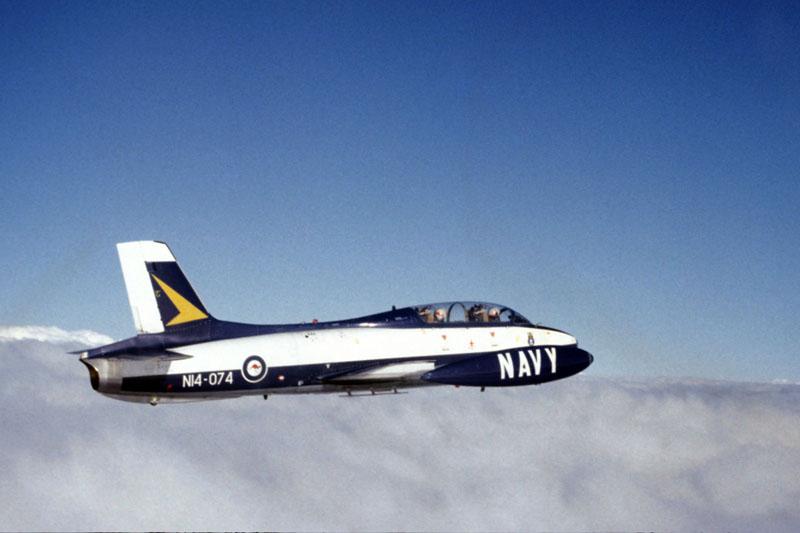
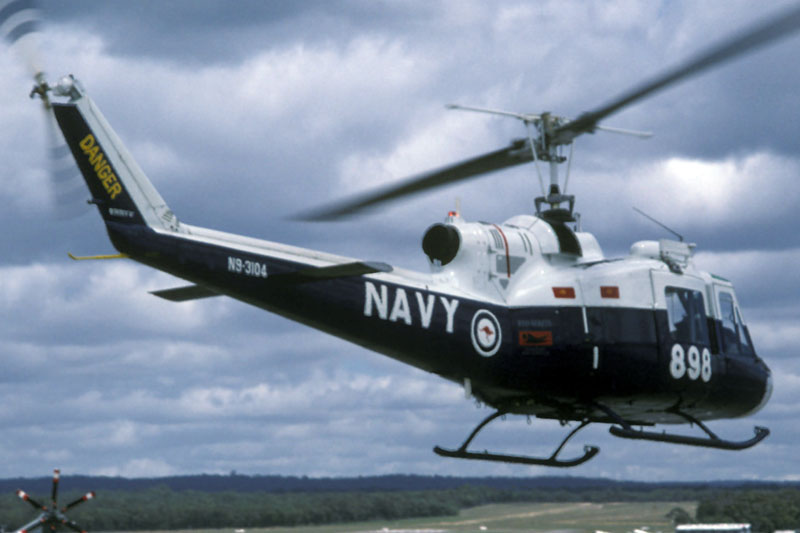
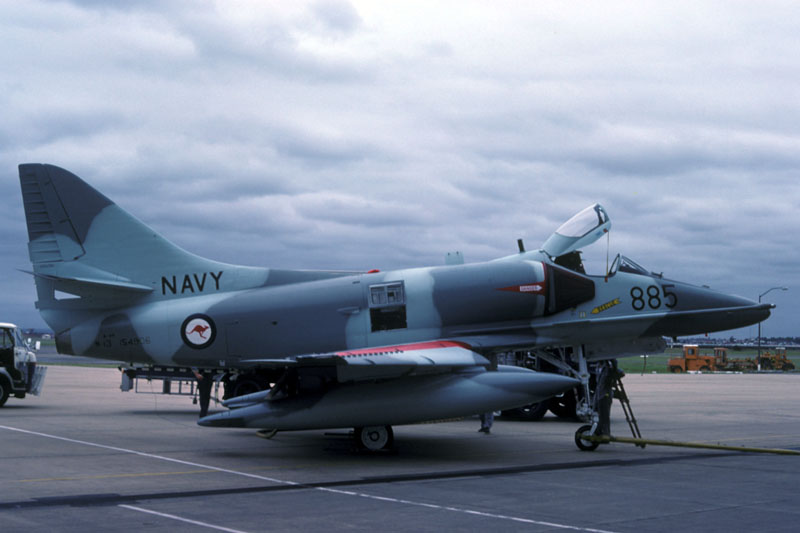
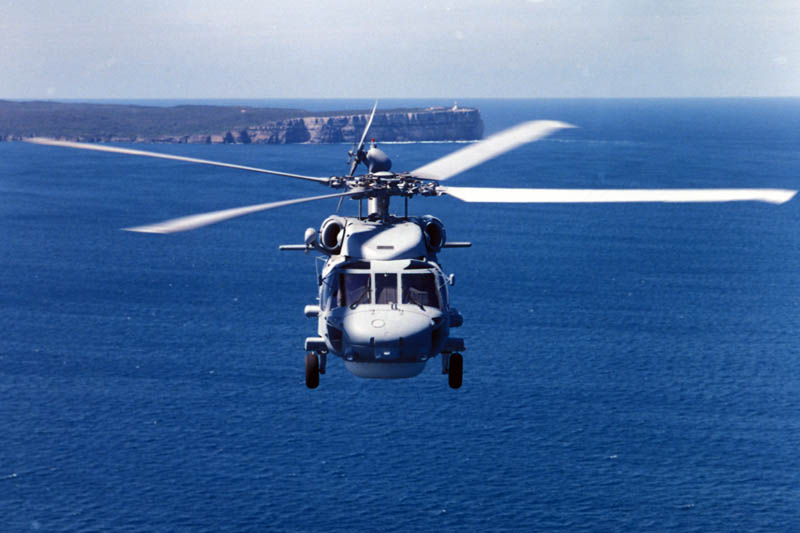
UNITS, AIRCRAFT, AND OPERATIONAL ROLES
Similar to the other units of the RAN, previously within the structure of the Royal Navy, HS816 (call sign ‘Tiger’) was officially formed by the FAA at the end of the WWII, on August 28 1948, and was initially equipped with Firefly Mk.IVs, operating in the anti-submarine role. During its existence it has been disbanded and re-activated several times, nearly always operating in the anti-submarine role, and flying successively the Gannet and Tracker from all the three Australian carriers. In 1984 the unit converted to rotary wing aircraft for the first time with the Wessex Mk.31B, this time, however, flying transports and supports missions on behalf of the Army’s assault troops. Disbanded once again in 1987, HS816 was brought back to life on July 23 1992, when it inherited the functions of the S-70B-2 Introduction and Transition Unit, the unit specially established in 1987 for the introduction of the new helicopter. Currently, HS816 is responsible for all S-70B-2 training, in addition to acting as the support unit for the Seahawks embarked in the RAN fleet of six Guided Missile Frigates. The first batch of eight aircraft, ordered in 1984, was manufactured by the Sikorsky Aircraft Division of United Technologies Corporation in Florida, and delivered to RANAS Nowra on October 4, 1989. The last eight elicopters were ordered in 1986 and assembled by Aerospace Technologies Australia (ASTA) at Avalon, Victoria, with the final aircraft being delivered to the RAN in 1991.
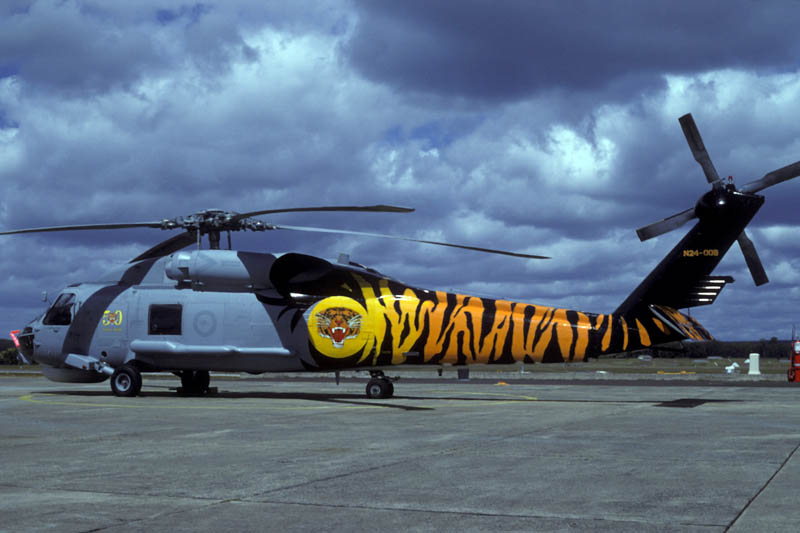
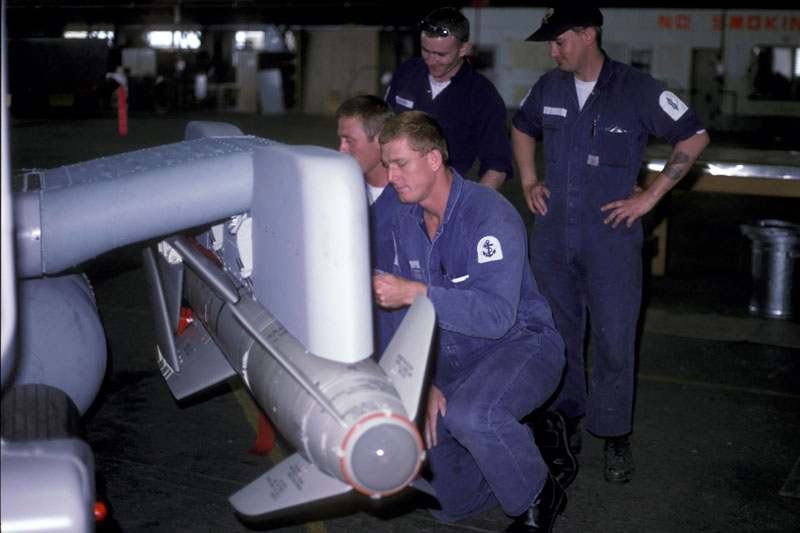
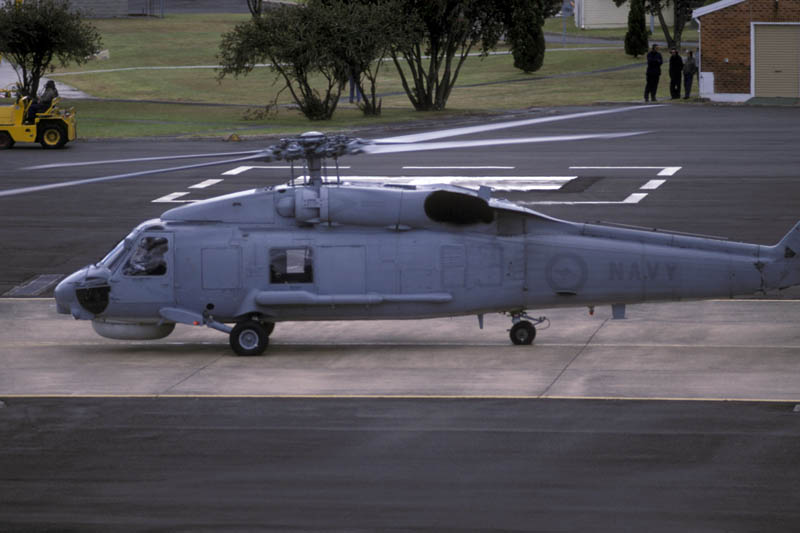
The Seahawks are principally used in the ASW (Anti Submarine Warfare) and ASST (Anti Surface Surveillance and Targeting) roles, supporting the six Adelaide-class Guided Missile Frigates (FFG), each of which can accommodate up to two helicopters. In the ASW role the S-70 uses SSQ-801 Barra air-dropped sonar buoys for active and passive search, eight of which can be simultaneously monitored by the Rospatch AN/AAR-84 system, and the retractable MAD (Magnetic Anomaly Detector) boom, which is linked to the CAE Electronics AQS-504. In this configuration the available weapons load consists of a maximum of three Mk.46 torpedoes. In its surface shipping surveillance role the Seahawk uses its MEL SuperSearcher X-band search radar linked to two powerful electronic information managers built within a MIL-STD 1553 data bus, a Rockwell Collins DHS-901 data link, and the DTS-901 dataloader. Able to automatically track and monitor 32 different contacts, and 31 additional targets in manual mode, the helicopter can identify a frigate at more than 95nm range. All the target data can be transmitted in real time to its parent ship, expanding the radius of action of the vessel by up to ten times. As well as the capability to launch AGM-119B Penguin Mk.2 Mod 7 or Sea Skua anti-ship missiles, the Seahawk can also serve as a guidance link for RGM-84 Harpoon anti-ship missile launched directly by the frigate at targets outside its acquisition range. Finally, the S-70s are used in the maritime search and rescue role, and for troop transport, for which they are armed with a MAG 58 7.62mm GPMG, to offer protection during landing. Thanks to the complete compatibility of the multifunctional tactical displays with NVG (Night Vision Goggles), the Australian Seahawks are at present the most sophisticated helicopters of this type actually in service. Future planned developments include the acquisition of a new concept FLIRD (Forward Looking InfraRed Detector) pod and revised ESM (Electronic Surveillance Measures) equipment. To allow the aircraft to be flown from the decks of the RAN’s FFGs, even in the roughest of seas, all the Seahawks (as well the frigates) have been fitted with the Canadian Recover, Assist, Secure, Traverse (RAST) landing and deck-handling system. This makes the landing manoeuvre safer by hydraulically lowering the aircraft into a trap via a cable attached while the helicopter hovers high above the deck, clear of the pitching and rolling ship. Once secured in the trap and the blades automatically folded, the aircraft is remotely stowed in the ship’s hangar. For take-off, the sequence is essentially reversed and immediately prior to launching, the S-70 is released from the trap. Two Seahawks participated embarked in the Gulf War even before the Unit had completed its training phase, together with two AS.350BAs, on the missile frigates HMAS Adelaide and HMAS Darwin.
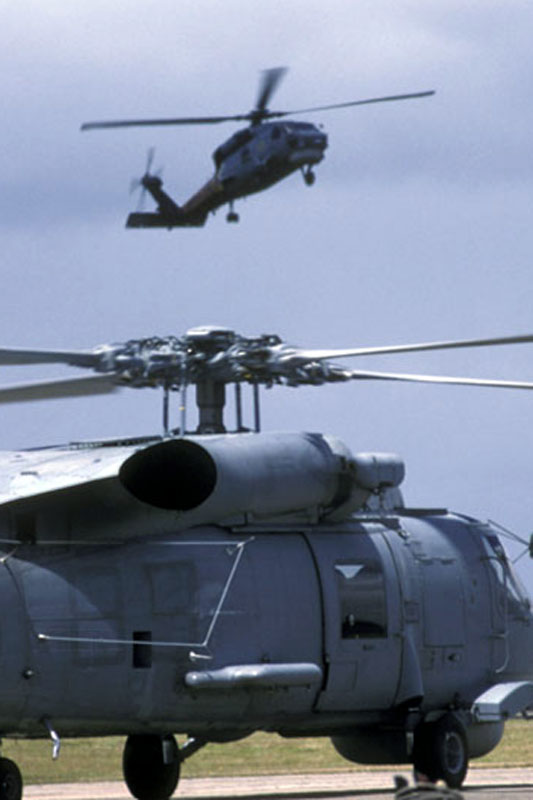
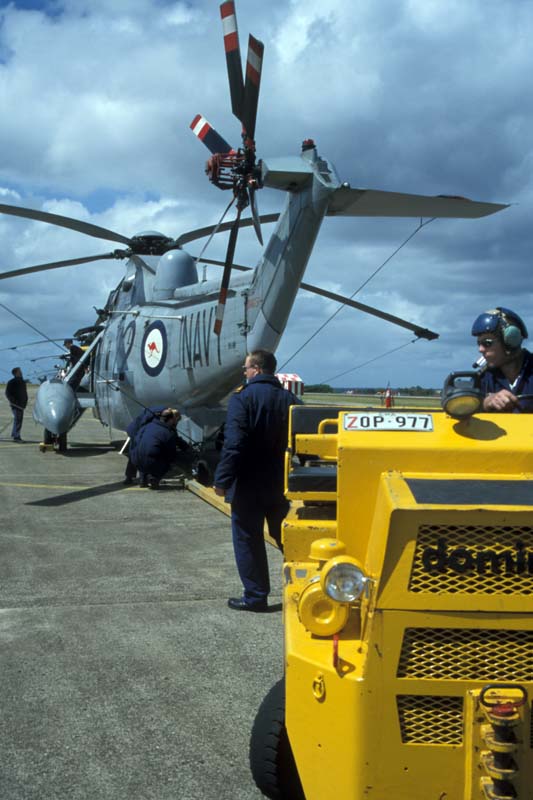
Formed in 1941, HS817 (call sign ‘Sharks’) had an early life similar to HS816, operating from both land and sea. During its life it has flown Fireflies and Gannetts in the ASW role, and Wessex Mk.31s in the troop transport role. Between 1950 and 1952 the Squadron embarked with its Fireflies in HMAS Sydney for offensive operations during the Korean War. More recently, during the period 1992-1995, the ‘Sharks’ provided an embarked flight in support of UN operations in Somalia, and in support of peacekeeping operations in Bouganville. Since 1976 HS817 has operated the Sea King MK.50, of which ten examples were originally acquired, built by Westland Helicopters in the UK; of these only four examples are still operational. In 1983 two helicopters were added to the fleet as attrition a/c, this time of a revised version designated Mk.50A. And more recently, in 1996, another Sea King joints the fleet, this time a Mk.50B. As a result of their similarity, crew can fly either type with a single rating, as the differences are minimal, and not enough to compromise the successful outcome of the mission. Powered by two 1,600 shaft horsepower Rolls Royce Gnome H1400-1 engines the Sea King has a maximum weight of some 21,000 lbs (9,500 Kg), a speed of 120 knots, and a range of about 450 nms. The standard crew comprises two pilots, one observer and an air-crewman. The Unit’s principle role is that of air transport of men and supplies, and rapid liaison between surface units. In this configuration the Australian Sea King can accommodate up to 21 equipped troops, or lift loads of up to three tonnes attached to its external baricentric hook. Heli-borne insertion training is also conducted with the Army’s special forces commandos of the Australian Special Air Service, as the Sea King’s radar has proved very useful in night operations with the commandos. Other tasks assigned to the Sea King include anti-surface unit operations, where the helicopter principally functions as a director for frigate launched anti-shipping missiles at target outside its visual range (OTHT - Over The Horizon Targeting). Although no longer a primary role, the Sea King can also assist in the anti-submarine task, being equipped with a Plessey Type 195 dunking sonar and carrying two Mk.46 torpedoes or two Mk.11 depth charges. Finally, thanks to its excellent stability in hovering flight, as well as the precision of its search radar, the Sea King is the principle helicopter utilised for day and at night maritime SAR missions, and is often called on to operate in support of civil rescue agencies. For MedEvac tasks the Sea King can be also configured for the carriage of up to nine stretchers. In 1995/96 all the helicopters have been subjected to a structural renewal programme called “Life of Type Extension” (LOTE) programme, which will guarantee another twenty years of full operational activity. Consequently a replacement helicopter is not foreseen until 2015.
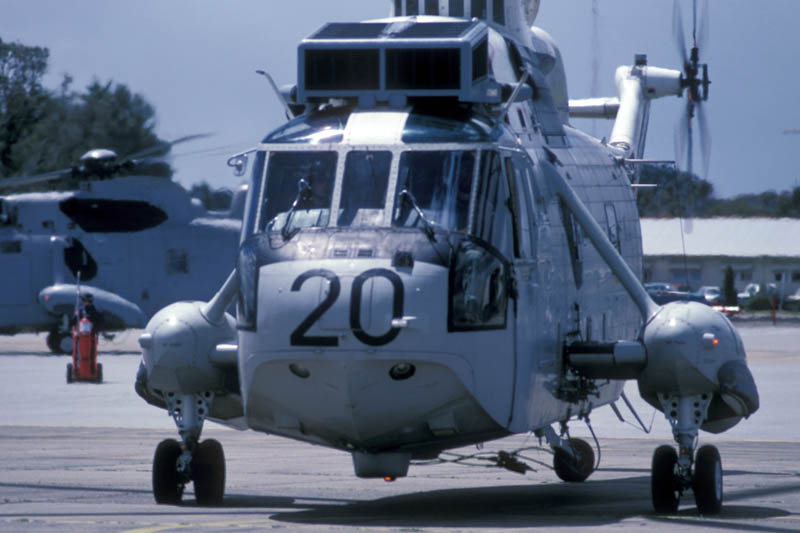
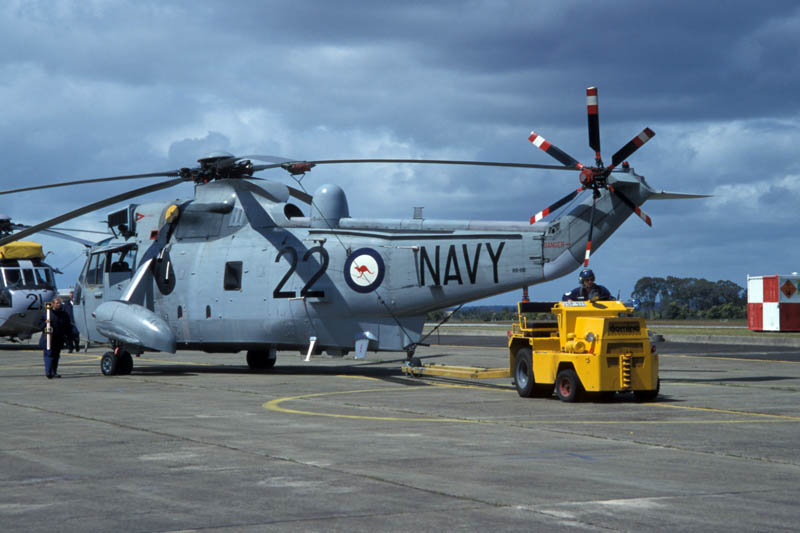
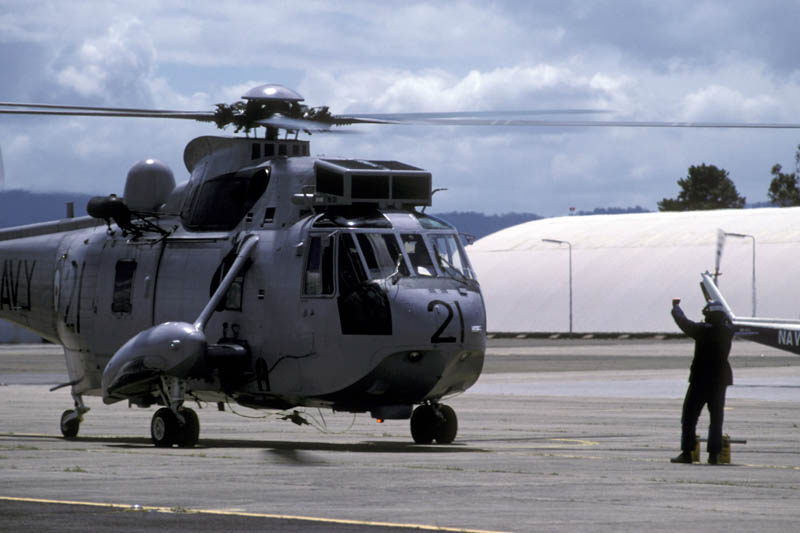
The final Unit at present assigned to the NAFEG is HC723. This Unit has had a longer association with RANAS Nowra than any other of the Fleet Air Arm. It was first commissioned in February 1945, as 723 Fleet Requirements Unit Squadron, and was equipped with Martinets, Grumman Corsairs, De Havilland Tiger Moths, Grumman Hellcat, Beech Expediter, Vultee Vengeance and Avro Ansons. Ever since its formation HC723 has always carried out various fleet support activities, including pilots and navigators training, target towing, radar target, liaison, and supporting communications with submarines. When its first helicopters arrived in 1953, the Unit initiated SAR missions, as well as basic and advanced helicopter pilot training courses. In the course of the years the unit has probably had the highest number of different types of aircraft on charge than any other unit of the Fleet Air Arm: from the De Havilland Tiger Moth to the Douglas C-47, passing through Manufactured Wirraways, Firies, Sea Furies and Vampires, and in terms of rotary winged types, Bristol Sycamore, Bell UH-1, Westland Scout and Wessex. Today the Squadron’s duties include SAR, MedEvac, fleet support, communications, and electronic warfare training. At the present time HC723 uses two Hawker Siddeley HS.748-268, received in 1973, initially to satisfy the requirements of RAN VIP transport, but also used for navigator training, to conduct long range offshore SAR operations and to perform liaison duties. In 1983 one of the two aircraft was modified by Sanders Associates and fitted with electronic countermeasures systems and chaff dispensers, enabling it to function as an electronics warfare trainer for all the units assigned to the entire Australian defensive system (ADF).
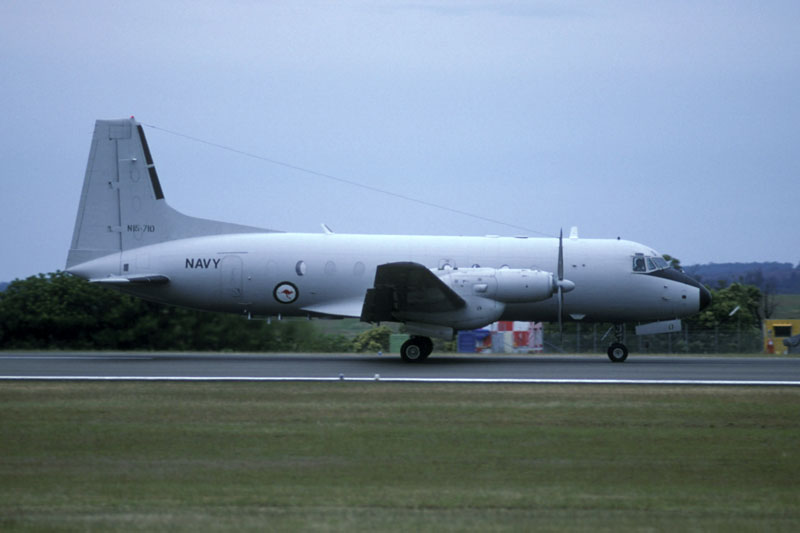
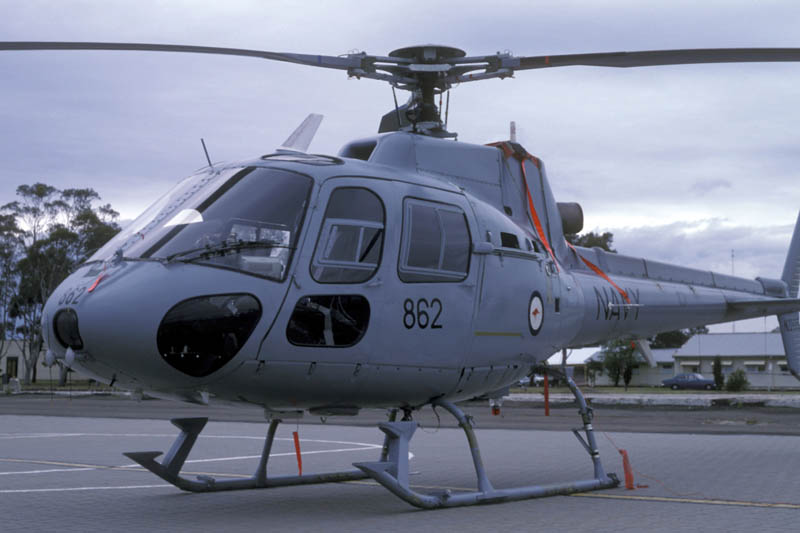
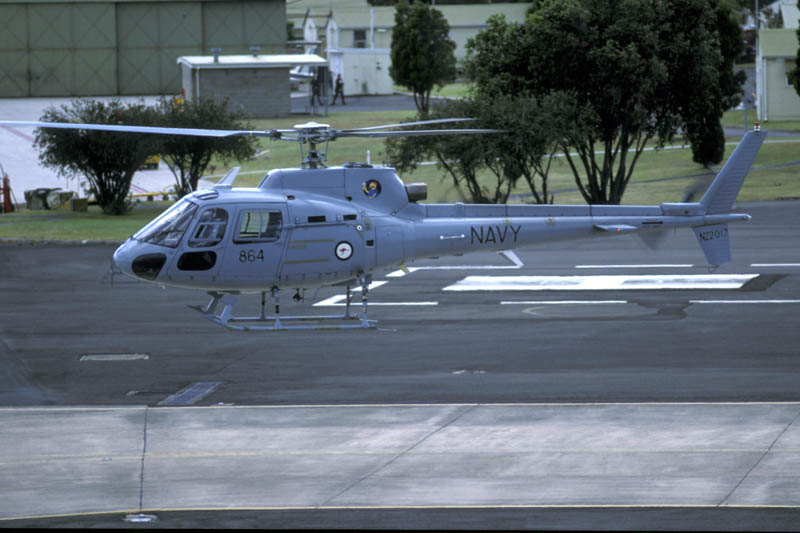
For rotary winged operations the Unit has six Aerospatiale AS.350BA and five Bell 206B-1 on charge. The latter were acquired as replacements for the Westland Scout in 1973, when an initial batch of two was followed by an additional batch of four. All the Kiowas were received from the Australian Army Air Corps (AAAC), with which the FAA has for some years maintained a common training programme. These helicopters are used for liaison, air observation, and for the training of personnel destined to support ship-borne helicopter operations. The six AS.350BA are utilised principally for the advanced training of helicopter crews, both pilots and observers. They are particularly dedicated to the initial process of acclimatisation to operations off warships that are under way. Thanks to their small dimensions, these helicopters can fly off the flight deck of the six Guided Missile Frigates, or from HMAS Tobruk. The Squirrel can be armed with a side-mounted machine gun for self-defence, fleet defence against light craft, and for helicopter escort during airborne assaults. Operational trials, to find an interim helicopter prior to the arrival of the new SH-2G(A) Super Seasprite, have been performed on board the first two Anzac class frigates (FFH), of which eight have been ordered. To increase safety while operating over the sea, the Squirrels have been modified with the introduction of a lightweight Doppler navigation system. Being a single-engined a/c, it is not ideal for prolongued over water ops. Secondary duties attached to the helicopter include liaison, airborne observation, short-range SAR operations, mine searches, and light logistic support.
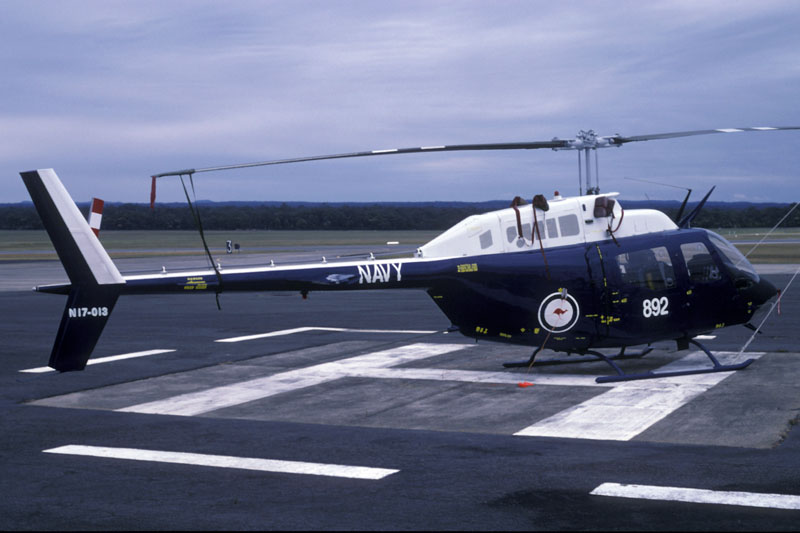
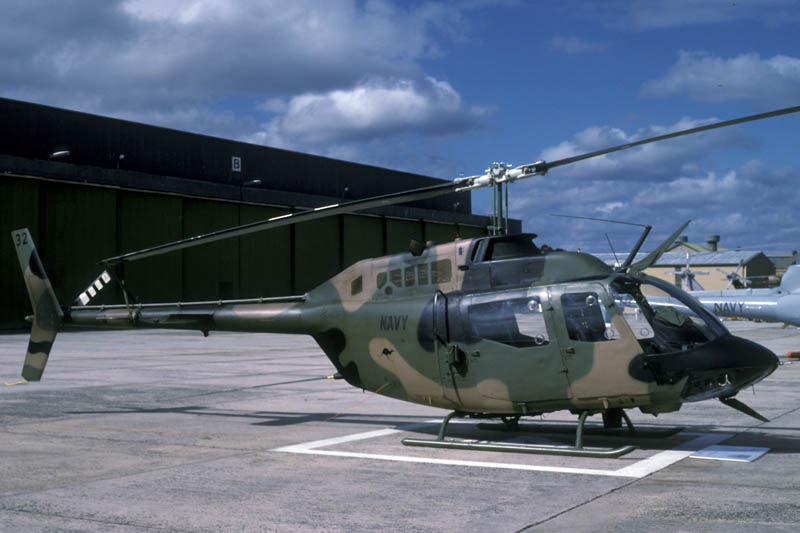
TRAINING
As with all the other naval aviation elements around the world, NAFEG pilots undergo their initial flying training on fixed-wing aircraft. Having successfully completed the initial screening phase, the training programme continues with a minimum of 100 hours on the NZAI CT-4 Airtrainer and a further 130 with the Pilatus PC-9/A. The first period, designated Basic Flying Training School (BFTS), and lasting around six months, is completed at the BAe-Ansett Flying College at Tamworth, NSW, using civilian aircraft and both civil and military instructors. The subsequent phase uses the facilities of the Air Force at No.2 FTS of RAAF Pearce, WA, home of the Advanced Flying Training School (AFTS); the cadets remain here for a ten month period, at the end of which they obtain their much desired pilots’ Wings.
After graduation, the new pilots are transferred for a four-month period to Fairbairn, ACT, home of the Australian Defence Force Helicopter School. This unit was created out of the remains of the disbanded Training Flight of No.5 Squadron, AAAC, and has 18 Eurocopter AS 350U Squirrel on charge, being tasked with the training of all Australian military helicopter pilots. The basic and initial helicopter courses comprise some 120 hours on the Squirrel; simulator hours must also be added to this total. At the end of this course the successful cadets are granted their military helicopter pilots licence.
At this point, considering both the staffing requirements of the FAA and the personal propensities of single individuals, the pilots are transferred to HMAS Albatross and subdivided into two groups: the first will be destined to fly the Sea King, while the second group will be posted to Seahawk operations.
Pilots selected for the Sea King are assigned to HS817, where in a period of about six months they convert onto the helicopter, flying some 65 hours, and ‘flying’ another 65 in the simulator. At the end of the course they are qualified as Mission Ready Sea King copilot, , but without flight command responsibilities. To achieve the status of aircraft commander they must successfully complete some three years of intense operational activity.
Future Seahawk pilots are subjected to further training, flying for another 150 hours on the Squirrel with HC723, and completing a NLIHT (Naval Lead In Helicopter Training) programme. All this supplementary training is used in accumulating wider experience, allowing them to complete their first missions from the decks of warships in navigation as first officers. Successively they transfer to HS816, where they fly for 75 hours on the S-70, and undergo additional simulator training. This course is designated OFT (Operational Flying Training), and at the end of which the pilots reach the status of ‘aircraft captain’ and are declared Deck Qualified (the equivalent of Air Force ‘combat readiness’ pilot status). They are qualified to operate off surface units in any sea state, in any weather, and by day or night.
From this moment begins a long period of embarked duty for the pilots, lasting a minimum of two years, and during which they manage to accumulate notable operational experience, and flying not less than 300 hours per year. Every six months they are obliged to return to RANAS Nowra for a fifteen days simulator course, utilised for the refreshment of emergency procedures training and the updating of their knowledge of new operational tactics or techniques.
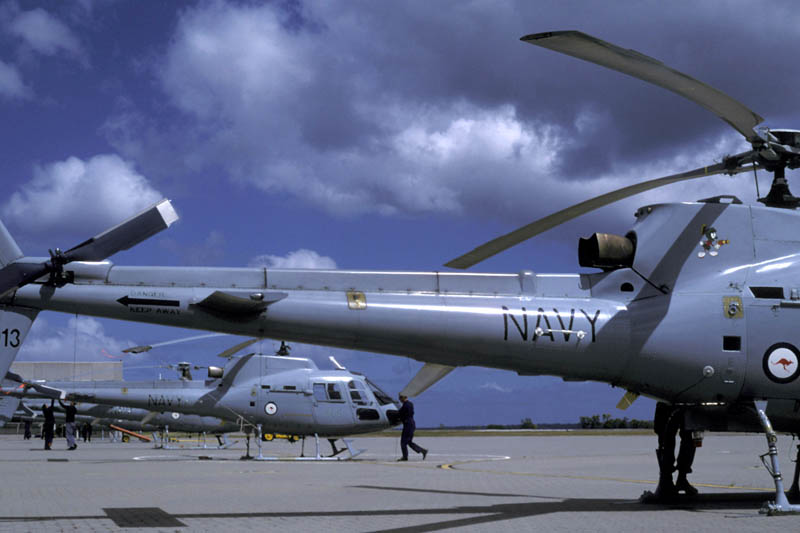 The ‘observers’ undergo a different training syllabus; the observers have overall responsibility for the outcome of the mission, and as such have only a basic ability to pilot helicopters. This allows them, in the event of the incapacity of a pilot, to safely return the helicopter to base, but not to pilot the helicopter during operations. The Australian Navy has conducted experiments, which have produced excellent results in the strict division of the responsibilities of flying the helicopter and managing the mission.
The observers begin their training at the School of Air Navigation at RAAF SALE, Vic., where in a short nine months they fly no less than 90 hours on the Beech B.200 Super King Air and begin to gain flying experience as navigators and pilots. Transferred to RANAS Nowra, they fly 35 hours in four months on the AS.350BA helicopter, at the end of which they gain their ‘observer’ qualification. In order to optimise the training costs, in this phase the cadets are jointly trained with the pilots of the NLIHT course, operating both solo or with other IP (Instructor Pilot) and IO (Instructor Observer). Subsequently the observers are posted to HS816 for the OFT course on the S-70, which in this case lasts around a year and includes some 70 hours flying and at least 100 on the simulator. On completion of this course they gain the qualification of TACCO (TACtical Co-Ordinator), the rank of First Lieutenant, and are ready to be posted aboard a ship for a minimum of two years. All the training of the Seahawk crews is obviously centred around their deployment on ships, both on the Adelaide class missile frigates and, although only temporarily, on the Anzac class frigates (FFH). For operational activity, the typical ships’ Flight (Flt) is composed of two pilots, two observer/TACCOs, two SENSOs (SENSor Operator), and nine maintenance technicians and flight deck operators.
Despite having undergone a notable quantitative reduction in its recent past, which included the abandonment of its last aircraft carrier, the Australian Navy has now initiated a period of modernisation in both qualitative and quantitative terms. This is reflected in its air component, by now a proven essential for the efficient conduct of offensive or defensive military operations, as well as for the protection of the nations territorial and maritime assets, and which is also undergoing a phase of notable expansion. The arrival of the Seahawk at the end of the last decade and the imminent acquisition of the new Kaman SH-2G(A), cannot fail to give a morale lifting, qualitative and professional boost to the entire Australian defence community, within which the Navy plays a part of the utmost importance which perhaps is not granted the recognition that it justifiably deserves.
The ‘observers’ undergo a different training syllabus; the observers have overall responsibility for the outcome of the mission, and as such have only a basic ability to pilot helicopters. This allows them, in the event of the incapacity of a pilot, to safely return the helicopter to base, but not to pilot the helicopter during operations. The Australian Navy has conducted experiments, which have produced excellent results in the strict division of the responsibilities of flying the helicopter and managing the mission.
The observers begin their training at the School of Air Navigation at RAAF SALE, Vic., where in a short nine months they fly no less than 90 hours on the Beech B.200 Super King Air and begin to gain flying experience as navigators and pilots. Transferred to RANAS Nowra, they fly 35 hours in four months on the AS.350BA helicopter, at the end of which they gain their ‘observer’ qualification. In order to optimise the training costs, in this phase the cadets are jointly trained with the pilots of the NLIHT course, operating both solo or with other IP (Instructor Pilot) and IO (Instructor Observer). Subsequently the observers are posted to HS816 for the OFT course on the S-70, which in this case lasts around a year and includes some 70 hours flying and at least 100 on the simulator. On completion of this course they gain the qualification of TACCO (TACtical Co-Ordinator), the rank of First Lieutenant, and are ready to be posted aboard a ship for a minimum of two years. All the training of the Seahawk crews is obviously centred around their deployment on ships, both on the Adelaide class missile frigates and, although only temporarily, on the Anzac class frigates (FFH). For operational activity, the typical ships’ Flight (Flt) is composed of two pilots, two observer/TACCOs, two SENSOs (SENSor Operator), and nine maintenance technicians and flight deck operators.
Despite having undergone a notable quantitative reduction in its recent past, which included the abandonment of its last aircraft carrier, the Australian Navy has now initiated a period of modernisation in both qualitative and quantitative terms. This is reflected in its air component, by now a proven essential for the efficient conduct of offensive or defensive military operations, as well as for the protection of the nations territorial and maritime assets, and which is also undergoing a phase of notable expansion. The arrival of the Seahawk at the end of the last decade and the imminent acquisition of the new Kaman SH-2G(A), cannot fail to give a morale lifting, qualitative and professional boost to the entire Australian defence community, within which the Navy plays a part of the utmost importance which perhaps is not granted the recognition that it justifiably deserves.
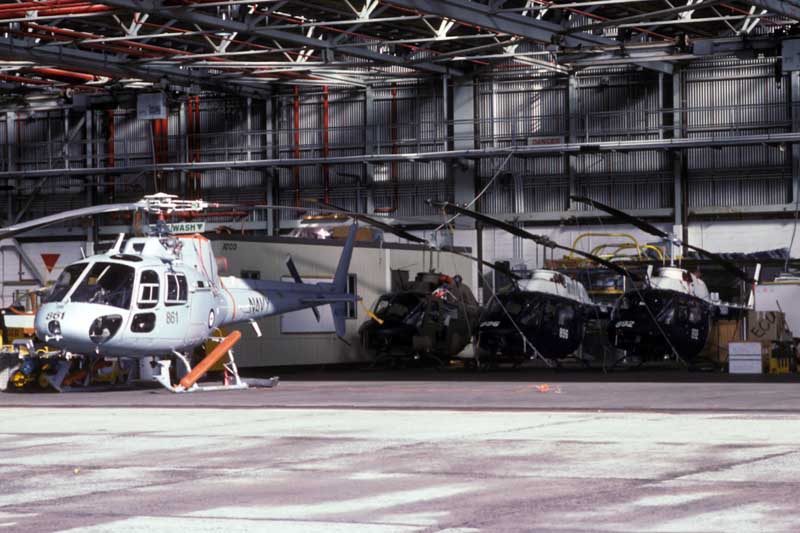
The author wishes to thank Frank McMeiken for translation from the Italian and expresses gratitude to HMAS Albatross Deputy Commander Vincenzo Di Pietro and F/Lt Troy Mussio for their support and help in the preparation of this article. Special thanks also to LCDR R. E. Geale, the Australian Naval Aviation Museum Curator, for his help in compiling the list of historic aircraft in service within the Royal Australian Fleet Air Arm.
1999© Paolo Rollino/Aviation Reports